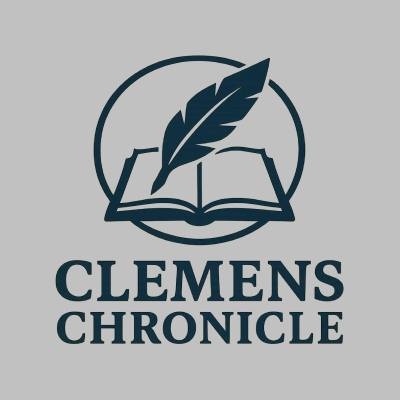Nestled on the banks of the mighty Mississippi, Hannibal, Missouri, is a town steeped in history and literary legend, forever linked with the boyhood adventures of Mark Twain. More than just a picturesque tourist destination, Hannibal is a vibrant community with an active local government, bustling businesses, and a continuous stream of events. For generations, the town’s pulse has been recorded, disseminated, and reflected through its local media outlets, which have undergone a fascinating evolution from the early days of ink and paper to the dynamic digital landscape of today.
Twain’s Town: The Dawn of Hannibal Journalism
In the burgeoning river town of Hannibal, the need for timely information was paramount. As steamboats plied the Mississippi, bringing goods, news, and new residents, a local newspaper quickly became the central nervous system of the community. Early publications, often weeklies, emerged in the mid-19th century, serving as vital conduits for everything from shipping schedules and market prices to local ordinances and social announcements, laying the groundwork for what would become a cornerstone of Hannibal life.
These nascent newspapers were far more than just news providers; they were the community’s bulletin board, its voice, and its conscience. They chronicled the growth of Hannibal from a bustling port to a thriving commercial center, reporting on the construction of new buildings, the establishment of schools, and the everyday lives of its citizens. The Hannibal Courier-Post, a name that resonates through generations, traces its lineage back to these very early days, embodying the enduring spirit of local journalism.
While Mark Twain himself moved beyond Hannibal to pursue his own literary and journalistic endeavors, the atmosphere of a bustling print industry would have profoundly shaped his formative years. These early Hannibal papers were the mirrors reflecting the "Twain era" — capturing the essence of river life, local characters, and the small-town dynamics that later inspired his immortal works. They were essential to informing residents about everything from cultural events to important civic discussions, truly cementing their place in the town’s fabric.
The Airwaves Arrive: Hannibal’s Media Diversifies
The early 20th century heralded a revolutionary shift in media consumption with the advent of radio. For a town like Hannibal, the arrival of local radio stations, such as KHMO in the 1940s, marked a significant diversification of its media landscape. Suddenly, news, entertainment, and public announcements could be delivered instantly, directly into homes, offering a new, immediate, and often more personal connection to the community than print could provide.
Radio swiftly became an indispensable complement to the established newspapers. While the Courier-Post continued to provide in-depth reporting and analysis, radio offered breaking news flashes, live coverage of local events like high school sports games or community festivals, and real-time updates crucial for a town situated on a major river, such as flood warnings or navigation alerts. It broadened the reach of local information, making it accessible to those who might not regularly read the paper, fostering a more inclusive sense of community.
The unique role of local radio in Hannibal cannot be overstated. Beyond news and sports, it became a trusted source for local weather, emergency information, and a platform for local voices through talk shows and public service announcements. It provided a constant, comforting local presence, especially during challenging times, reinforcing the town’s identity and connecting residents through shared listening experiences, further deepening the bond between the media and the community.
Shifting Sands: Print’s Challenge in the Digital Era
The late 20th and early 21st centuries brought about the most profound transformation in media, as the internet and digital technology began to reshape how people consumed information. For the Hannibal Courier-Post and local radio stations, this meant navigating unprecedented challenges, including declining print circulation, a shift in advertising revenue to online platforms, and the relentless demand for instant news updates that traditional print schedules simply couldn’t match.
The Hannibal Courier-Post, like countless local newspapers across the nation, embarked on a journey of adaptation, launching its own website to provide digital content and attempting to bridge the gap between its print legacy and the online world. Despite efforts to maintain relevance and readership, the industry faced significant contraction, often leading to fewer print days, smaller newsroom staffs, and a greater reliance on syndicated content. Yet, the paper’s role in covering vital local government meetings, school board decisions, and unique Hannibal events remained irreplaceable.
Beyond the traditional outlets, the digital era also saw the rise of social media and hyper-local online forums, which began to fill some of the roles previously held by established media. Residents increasingly turned to Facebook groups and community pages for immediate updates, discussions, and event information. This fragmentation of the audience presented a new challenge for Hannibal’s legacy media outlets: how to remain the primary, authoritative source of local news amidst a deluge of user-generated content and national headlines.
Community Connection: The Future of Hannibal Media
Despite the dramatic shifts in technology and consumption habits, the fundamental need for robust local journalism in a town like Hannibal remains as strong as ever. With its rich cultural heritage, active tourism industry revolving around Mark Twain’s legacy and the Mississippi River, and the ongoing functions of local government, accurate and engaging local news is crucial for maintaining community cohesion, fostering civic engagement, and preserving Hannibal’s unique identity.
Hannibal’s media outlets, both traditional and emerging, are continually adapting to secure their future. This often involves a greater focus on digital-first content, exploring subscription models for exclusive local reporting, embracing multimedia formats like video and podcasts, and engaging more directly with the community through online platforms. There’s also a growing recognition of the potential for collaboration with local businesses, non-profits, and educational institutions to sustain and enrich local storytelling.
Ultimately, the future of Hannibal’s media is intrinsically linked to the enduring spirit of the town itself. From the echoes of steamboat whistles to the bustle of modern-day tourism, the core mission of local media remains to connect residents, tell their stories, and reflect the unique character that defines Hannibal. The landscape may continue to evolve, blending digital platforms with community-driven initiatives, but the unwavering commitment to informing and uniting this historic river town will undoubtedly remain at its heart.
===OUTRO:















